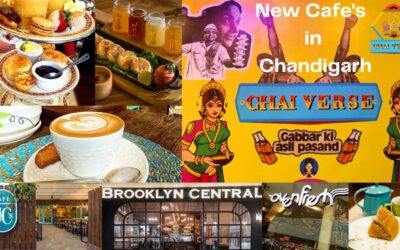
The name “Shimla” is derived from the word Shyamla – the incarnation of Goddess Kali. Beginning in the 18th century, when the British army defeated the Gurkhas and seized control of this area, this lovely town has a long and colourful history. Hence, this area was primarily covered with dense forest which is known as Shimla Hills.
The history of Shimla Hills would have never been so green & royal if, the British had not saved the land from the Gurkhas.
According to details of Shimla’s history, it is also said that earlier this temple was located on the top of Jakhu Hills. Thus, now it is popularly known as the Kali Bari Temple.

Lt. Ross in 1819 A.D. builds a log hut as a summer retreat near the village of Shimla. Thus, after him in 1822 A.D, Capt. P.C Kennedy (1822-35) build a pucca house (Kennedy House) which was near the present Vidhan Sabha. However, Shimla is popularly known as “The Queen of Hill Stations“. Hence, Shimla (Himachal Pradesh) is spread out across seven different hills which together form the city of Shimla place it is spread across 7 Hills in the Northwest Himalayas.
- Observatory Hill.
- Prospect Hill.
- Inveram Hill.
- Elysium Hill.
- Summer Hill.
- Jakhoo Hill.
- Bantony Hill.
The present Shimla district comprises 19 small erstwhile Shimla Hills states which merged with Himachal Pradesh in 1948 and constituted part of the Mahasu district.
Apart from these states, the hilly areas of erstwhile Patiala state and areas of Kotkhai, Kotgarh, Shimla town and Jutogh Cantonment of the provincial government were also part of the district after independence at different stages.
Table of Contents
Early History of Shimla Hills:

The earliest History of Shimla can be traced to the epic Mahabharata. Therefore, Himachal Pradesh was made out of the combination of several Janapadas or small tiny republics.
So let’s discuss information regarding it:
- Audumbaras- This ancient tribe inhabited the lower foothills of Shimla. Lower hills area between Pathankot & Jawalamukhi their home. They also ruled over the lower hills of the Himalayas between Sirmaur, Chamba, & Yamuna.
- Kuluta-They had established control over the lands between rivers Beas, Satluj & Yamuna. Thus, these constitute the Shimla & Sirmaur Hills.
- Gupta Empire- When Ashoka became the ruler. He extended his boundaries deeper into the Himalayan regions. Thus, Kullu Valley Stupa is a living example of this influence.
- Harsha Rule- Harsha rule came after the Gupta rule. Moreover, Harsha ruled from the 5th to the 6th century. Hence, the Himachal regions were ruled by Thakurs and Rana.
History of Shimla:
The history of Shimla is in two phases:
- The British Era Shimla
- After Independence
The British Era Shimla Hills-

Shimla has a rich ethnic background which is super vibrant & dynamic. However, In 1864, Sir John Lawrence officially declared Shimla as the Summer capital of the British Empire. Once the British established control in Shimla. Therefore, It quickly turned into a bustling little town with the facilities of a Post Office, Govt. Office Secretariat, Armed forces Headquarters, Clerk Cottages, Public Work Departments.
Beginning in 1806, when Bhimsen Thapa from Nepal attacked the Himachal region, is when the history of Shimla was first written down. Following his defeat in the Anglo-Nepalese War, which broke out in 1814 and lasted until 1816, the East India Company assumed control of this territory.
The Sugauli Treaty gave them control over the area. Since the Maharaja of Patiala sided with the British throughout the war, the East India Company gave him power over this area in exchange. When they continued to travel to the area, the English political agents erected homes to accommodate them.
Shimla captured the hearts of the British, who soon made the lovely Himalayan hill town their summer capital instead of Calcutta. Therefore, Between April and October, they spent much of their time in the hill station. The summer capital officers quickly began to buy homes there, but it was customary for them to just rent the homes for the specified months. Many Indian royals also travelled to the hill town of Shimla because of the concentration of British officials and executives there. The native leaders made a point of going there to mix with British circles and attend imperial durbars, and by the 1800s they were also among those who had bought several homes in Shimla alongside their British counterparts.
After Independence- “Existence of Shimla Hills”
The State was the result of the merger of 28 princely states which were located in the area. The H.P. chief commissioner province well-established on August 15, 1948, following independence. However, this was the outcome of the union of the four southern Punjab hill states and the 28 princely states in the western Himalayan areas, together known as the Shimla hills states.
The state of Bilaspur joined the newly created Shimla state on April 1st, 1954. Eventually, Himachal Pradesh was made a union territory on November 1st, 1956. Moreover, the state of Himachal Pradesh act was established by the Indian parliament on December 18, 1970, in recognition of the enormous size of Himachal Pradesh. Thus, the new state of Himachal Pradesh came into being on 25th January 1971. Hence, this is how Himachal emerged as the 18th state of the union.

The best history of Shimla includes the establishment of a Shimla train line in the year 1903. Meanwhile, It travelled between Shimla & Kalka. Therefore, Midway through the 19th century, the single-track Kalka Shimla Railway (KSR) was constructed to connect the mountain town of Shimla, India.
The Kalka -Shimla rail was built during British rule in India. In order to link Shimla, the summer capital of British India, with the northern plains, the 96km narrow-gauge Kalka-Shimla Railway, often known as the toy train line, was inaugurated in 1903. Hence, as early as that year, the Railway began to construct carriages.
Major Events:
Mahatma Gandhi’s major visit to Shimla-
1921- Meeting with Viceroy & Speech to the people at the Id-Gah Maidan. He also stayed in Shimla at Shanti Kutir, Summer Hills.
1931- Met Lord Willingdon.
1940- Meeting of Indian National Congress with Viceroy.
1945- Discussion under Wavell Plan.
1946- Discussion on Cabinet Mission & Cripps Mission.
Other Events in Shimla’s History:
Here discussing some of Shimla’s events:
In 1819- Lt. Ross Assistant political agent in Hill state built a cottage of wood. Thus, this was the first British House in Shimla.
In 1829- Bentick Castle for the Governor General, Lord William Bentick constructed.
By 1831- Shimla had about sixty permanent houses and a bazaar, and by 1844, the number of houses in Shimla had risen to 100.
In 1844- Daniel Wilson, laid the foundation stone of Christ Church of Shimla.
1850, 1851- From Shimla to Kalka Hindustan Tibet Road road started to construct in the following years.
In 1856- Cart road finished from Kalka to Shimla.
In 1864- Shimla was declared the Summer Capital of the Indian Govt. and the headquarters were shifted from Calcutta to Shimla.
1871-73– The office of the Punjab government transferred from Lahore to Shimla.
1913-14 – Tripartite conference between British, China & Tibet held. Britishers represented by MacMohan at Viceregal Lodge.
Know about Shimla Hills:
Shimla was made British India’s Summer capital in 1864, which persisted until 1939. Since 1871, Shimla had been the capital of the Punjab Govt. as well. After 1947, Shimla became the capital of Punjab and later became the capital of H.P.
1884-1888– Vice Regal Lodge made in the Viceroyalty of Lord Dufferin.
After its Independence in 1947, it was named Rashtrapati Niwas. However, It has been renamed as the Indian Institute of Advanced Studies. It was selected as a place for Advanced Studies in 1965 by the then-President of India Dr S. Radhakrishnan.
In 1887– The Gaiety Theater was opened on the 30th of May 1887, & first play hosted was “Time will tell”.

Shimla Municipal Committee was first constituted in 1852. It became status of a first-class municipality under the Act of 1867. Municipal Corporation replaced it in 1978.
Henry Irwin designed the Ripon Hospital and completed it in 1885. Lord Dufferin inaugurated it.
1901-1904– Gorton Castle starts making in the Neo-gothic style of architecture. It was once the Civil Secretariat of the British govt.
The Kalka-Shimla Railways route commissions for service on January 1, 1906.
Some Powerpoints-
- Major Kennedy introduced Potato Cultivation in Shimla hills. Hence known as the “Father of Green Revolution”.
- In 1888, the first Durand Cup of Football begins with sir Mortimer Durand.
- Hence, In 1902, Walker Hospital opened.
- Jakhu is the “Fountainhead of the city”.
- In 1905 for the transport of goods, the small Lakkar Bazar tunnel begin.
- In 1859, the Bishop Cotton School founded by Bishop George Edward Lynch Cotton. It is one of the oldest boarding Schools for boys in Asia.
- Edward Barnes was the first resident of Barnes court. It now holds the residence of the Governor.
- Shimla is also popular as the “British Jewel of the Orient”.
- It is the “Mountain City of India” and another name for it is “Simla”.
Current Situation:
Presently it is the state capital of H.P. with Shimla’s altitude of 2276m above sea level. Mandi and Kullu bound Shimla in the north, Kinnaur in the east, and Uttrakhand in the south. The languages spoken here are Hindi, Punjabi and Pahari. Shimla falls in the Seismic Zone 4. In 1828 the construction of the first road of Shimla begin.
- Shimla is one of the most popular tourist destinations at the national and international levels. Shimla tourism attracts crowds to Shimla from various parts of the world.
- Being a State Capital of Himachal Pradesh, there is sufficient availability of health facilities and higher education facilities in the region.
- A pleasant atmosphere, mountains, forests, and favourable climate also attract more migrants to the city. The best time to visit Shimla is in winter as you can get the best experience of Shimla’s Snowfall at that time in Shimla Hills. Shimla in summer is also famous for its Ridge Shimla, and Mall road Shimla and tourists nearby can travel from Chandigarh to Shimla within a few hours of travelling to enjoy the view of Shimla.
- The famous peaks of Shimla are Hatu Peak, Churdhar Peak, Jakhu Peak, and Chanshal Peak etc. & these are the best Shimla tourist places currently, the famous temples of Shimla are Hatkoti temple, Bhimakali temple, Taradevi temple, SankatMochan temple, Jakhu temple, and Hatu temple.

- The main crop in Himachal Pradesh is Wheat, Maize, Barley and Rice.
- Farming & Horticulture are the main primary activities at a large scale in the villages of Shimla.
- Apple is the principal cash crop of the state, principally in the districts of Shimla, Kinnaur, Kullu, Mandi & Chamba etc.
- Shimla with its traditional apple growing belt including Rohru, Jubbal, Kotkhai, and Kotgarh, is the state’s largest apple producer
Vision for Shimla Hills- (Future Plans)

The vision for the growth of any location or region becomes crucial because it aids in visualising where and how one wants the city to be in the upcoming years.
The vision of the Development Plan. It broadens into 3 goals –
- Planning and design that creates a suitable living environment.
- Preserve its identity & reputation.
- Optimal use of available resources.
To achieve sustainable growth, the natural environment and ecosystem of Shimla must need treatment with much greater care. Therefore, this development plan has been to keep in mind the potential of the area as a tourist attraction as well as its revitalised environment and diverse nature. The development plan is under the AMRUT Sub-Scheme of the Government of India by the Town and Country Planning Department, Himachal Pradesh. Thus, this plan covers Shimla Municipal Corporation and its surrounding areas including Kufri, Shoghi and Ghannati and some other additional villages.
Objectives of the plans-
- To increase the value of the city by developing greenery and improving the infrastructural systems and well-maintained open spaces. eg parks.
- To preserve the city’s historical Architectural heritage and national assets and to protect & restore them from time to time.
- Thus, to ensure that every household has access to a tap with an assured supply of water and proper sewerage connection.
- To reduce pollution by switching to public transport, by using Electric buses in the city.
- To set guidelines to systematically planned development in the planning area which should be eco-friendly, and sustainable.
Frequent-Asked Questions Shimla Hills:

Question 1. Why is Shimla so famous?
Answer. Shimla is so famous due to its natural beauty, architecture and old charm – the mountains, and oak forests. It is also famous for The mall, Ridge, and toy Train. The town is famous for its pleasant walking experiences on the hillsides.
Question 2. Which fruit is famous in Shimla Hills?
Answer. Himachal Pradesh is the “Apple State” and “Apple Orchard of India.” Apple production accounts for nearly 80% of the state’s fruit production, and within Himachal Pradesh, Shimla produces the most apples for commercial sale, with 90% of these apples destined for local markets.
Question 3. What is the most exciting thing about Shimla?
Answer. Visit Viceregal Lodge to experience the British era, and browse the wooden handicrafts in Lakkar Bazar. Take a Toy Train as a Passenger. One of the best things to do in Shimla is skiing in Kufri. Other top activities include seeing Annandale Museum, taking in the sunset at Scandal Point, going rafting in Tattapani, and playing golf in Naldehra.
Question 4. What is the heart of Shimla?
Answer. Sanjauli is the “Heart of Shimla”. Sanjauli is 8km faraway from the main Shimla Town. It is also famous for its “Government College Sanjauli”.
Question 5. What is the main food of Shimla Hills?
Answer. Sidu is a well-known fresh Shimla bread with yeast, paneer, pan-roasted almonds, and mashed, boiling green peas. It is an authentic Himachal meal and a mouthwatering bread variant. The traditional accompaniments with sidu include mashed daal, ghee, and pudina/dhania chutney.
Question 6. What is the famous sweet of Shimla?
Answer. Babru is a Shimla special dish that is sweet and resembles a kachori but is empty inside. After forming it into little discs, the dough from wheat boils until it puffs up and turns crispy golden.
Question 7. Which crop is famous in Shimla?
Answer. The main crop in Himachal Pradesh is Wheat, Maize, Barley and Rice. The major producer of Wheat, Maize and Rice is Kangra, Mandi district, and some parts of the Sirmaur district also produce these crops. Shimla is the largest producer of Barley.
Question 8. Which tree is most in Shimla?
Answer. The predominant species of tree in the forests of Shimla are Deodar, Pine, Oak, Kail and Rhododendron.
Question 9. What is the tradition of Shimla?
Answer. Mainly Shimla is famous for the Shimla festivals and folk dance forms such as Rasa dance, Bakhyang dance, Nati dance, Shand and Shabu dance, Kayang dance etc.
Question 10. What is the old name of Shimla?
Answer. The name Shimla was derived from “Shyamalaya,” which means “blue house” and is thought to be the name of a home made of blue slate by a faqir atop Jakhu. One explanation holds that Shimla gets its name from “Shamla,” which is another name for Goddess Kali and refers to a blue girl.
Question 11. Why Shimla is called the Queen of hills?
Answer. The seven hills that makeup Shimla, located in the northwest Himalayas, are collectively regarded as the “Queen of hill station”. Rhododendron, oak, and pine forests, as well as verdant valleys, surround it.
Question 12. What is the second capital of Shimla?
Answer. The two capitals of Himachal Pradesh are Shimla and Dharamshala. The winter capital is Dharamshala, whereas the summer capital is Shimla.







0 Comments
Trackbacks/Pingbacks